UNDERSTANDING HOW COLOUR INFLUENCES USER BEHAVIOUR AND ENGAGEMENT
When it comes to web design, the importance of colour cannot be underestimated. Beyond its aesthetic appeal, colour has a profound impact on human psychology and can evoke emotions, influence decision-making, and shape user experiences. As a website designer, understanding the principles of colour psychology and making informed colour choices can greatly enhance the effectiveness and success of your designs. In this article, we delve into the fascinating world of colour psychology and explore its impact on web design.
[UNDERSTANDING COLOUR PSYCHOLOGY]
Colours have inherent associations and meanings that can vary across cultures. For example, red may signify love and passion in one culture, while symbolising danger or caution in another. Understanding these cultural nuances is crucial in creating designs that resonate with your target audience. Additionally, colours have the power to evoke specific emotions and influence user behaviour. Warm colours like red and orange can create a sense of urgency or excitement, while cool colours like blue and green can evoke calmness and trust. By leveraging these psychological associations, you can effectively convey messages and elicit desired responses from your website visitors.
[APPLYING COLOUR IN WEB DESIGN]
In the realm of web design, colour plays a pivotal role in various aspects. First and foremost, it helps establish brand identity and recognition. Consistency in colour usage across your website builds brand cohesion and fosters a sense of familiarity among users. Moreover, colour can be used strategically to guide user attention and highlight important elements on the page. By employing contrasting colours or using vibrant hues sparingly, you can draw users’ eyes to key call-to-action buttons or significant sections of your website.
Creating a visually harmonious experience is another critical aspect of colour implementation. Understanding colour schemes, such as complementary, analogous, or monochromatic, can help you achieve an aesthetically pleasing and cohesive design. By utilising colour harmonies, you ensure that your website’s visual elements complement each other and create a balanced and unified experience for your users.
[CHOOSING THE RIGHT COLOURS FOR YOUR WEBSITE]
The process of selecting colours for your website should be guided by a deep understanding of your target audience, their preferences, and the purpose of your website. Conducting thorough research and employing user surveys or focus groups can provide valuable insights into colour preferences among your target demographic. Additionally, considering the context and purpose of your website is crucial. For example, if you’re designing an e-commerce site, you may want to consider colours that evoke trust and credibility, such as blues or greens.
It’s essential to leverage colour theory principles when making colour choices. Understanding concepts like colour harmony, contrast, and colour psychology will empower you to make informed decisions that align with your design goals and effectively communicate your brand message.
[PRACTICAL TIPS FOR COLOUR IMPLEMENTATION]
Implementing colours effectively requires attention to detail and a focus on user experience. Here are some practical tips to enhance your colour choices in web design:
- Ensure Sufficient Contrast: High contrast between text and background colours improves readability, especially for users with visual impairments. Use accessible colour contrast tools to verify your design meets the appropriate standards.
- Call-to-Action Buttons: Use contrasting colours or bold, attention-grabbing hues for your call-to-action buttons. This helps them stand out and encourages users to take action.
- Colour Variations: Consider using different colour variations to differentiate sections or functionalities within your website. This aids in visual organisation and creates a sense of visual hierarchy.
- Visual Balance: Avoid overwhelming your users with an excessive number of colours. Strive for visual balance by using a limited colour palette and ensuring that the overall design feels harmonious and cohesive.
[CASE STUDIES: SUCCESSFUL EXAMPLES OF COLOUR USAGE]
Examining real-world examples can provide valuable insights into the impact of colour choices on user experience and engagement. Let’s explore two noteworthy case studies:
- Airbnb: Airbnb’s use of a vibrant, eye-catching colour palette has contributed to its success. The brand’s signature coral colour, combined with a contrasting deep blue, creates a sense of energy and warmth. This colour combination conveys a feeling of adventure and exploration, aligning perfectly with Airbnb’s brand identity and the desire for unique travel experiences. By using bold colours strategically throughout their website, Airbnb effectively captures users’ attention and promotes engagement.
- Spotify: Spotify’s use of a vibrant green colour for its branding has become instantly recognizable. The colour green represents growth, freshness, and harmony, which aligns with Spotify’s mission of discovering and sharing music. Additionally, Spotify employs a variety of subtle colour variations within its app interface to distinguish different categories and sections, enhancing user navigation and engagement.
These case studies demonstrate how colour choices can contribute to brand recognition, user engagement, and overall success in web design.
FUTURE TRENDS AND CONSIDERATIONS
As technology advances, new trends and considerations emerge in the field of web design. When it comes to colour, several trends are gaining momentum:
- Dark Mode: Dark mode interfaces, characterized by dark backgrounds and contrasting light-coloured text, have become increasingly popular. Dark mode reduces eye strain, enhances visual focus, and provides a sleek and modern aesthetic. Consider incorporating dark mode options into your designs to cater to user preferences.
- Colour Customisation: Offering users the ability to customize colour schemes within your website can enhance personalisation and user satisfaction. Providing colour options that allow users to tailor the interface to their preferences can result in a more immersive and engaging experience.
- Integration with New Technologies: As virtual reality (VR) and augmented reality (AR) continue to evolve, the use of colour in these technologies becomes even more crucial. Understanding how colour can impact immersion, spatial perception, and user interaction within these contexts is vital for designers embracing these technologies.
CONCLUSION
Colour plays a pivotal role in web design, influencing user behaviour, evoking emotions, and enhancing brand identity. By understanding colour psychology, making informed colour choices, and considering the preferences and context of your target audience, you can create visually appealing and engaging websites. Remember to maintain visual balance, utilise contrast effectively, and adapt to emerging trends. By harnessing the power of colour, you can elevate your web design projects and leave a lasting impression on your audience. So, go forth, experiment, and paint the digital canvas with the hues that resonate with your brand and captivate your users.











